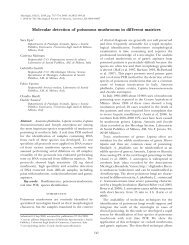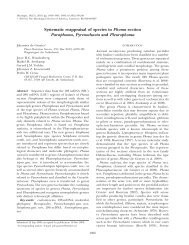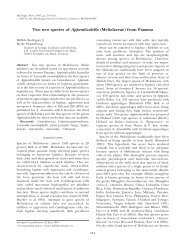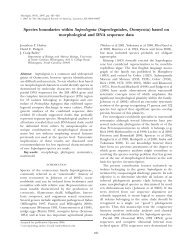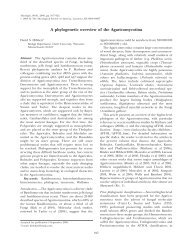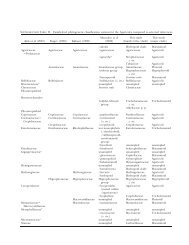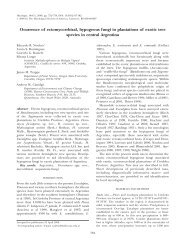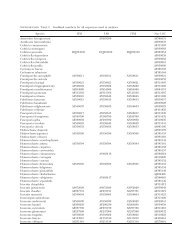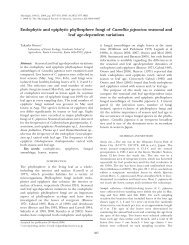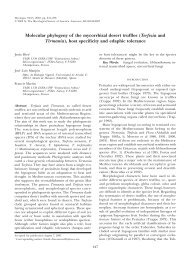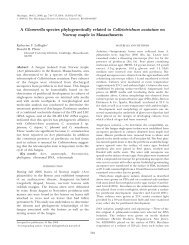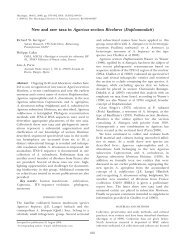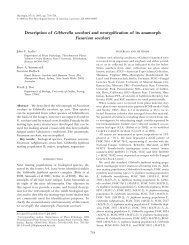Short title: Revision of Morchella taxonomy Taxonomic ... - Mycologia
Short title: Revision of Morchella taxonomy Taxonomic ... - Mycologia
Short title: Revision of Morchella taxonomy Taxonomic ... - Mycologia
You also want an ePaper? Increase the reach of your titles
YUMPU automatically turns print PDFs into web optimized ePapers that Google loves.
with sharp edges, but with age <strong>of</strong>ten rounded, sharp or eroded. Pits vertically elongated;<br />
glabrous; whitish to pale yellowish when immature, becoming brownish to yellowish brown at<br />
maturity. Stipe 15–150 mm high; 8–45 mm wide; more or less equal, or tapered to apex; <strong>of</strong>ten<br />
hidden by the hymenophore when young, but lengthening dramatically by maturity; <strong>of</strong>ten<br />
developing shallow longitudinal furrows; fragile; in warm, wet conditions sometimes becoming<br />
inflated, especially near the base; white to whitish or watery brownish; occasionally nearly<br />
glabrous but more commonly mealy with whitish granules that sometimes darken to brownish or<br />
brown. Context whitish to watery tan; 1–2 mm thick in the hollow hymenophore; in the stipe<br />
sometimes chambered or layered near the base. Sterile inner surface whitish to brownish; mealy;<br />
sometimes grooved. Ascospores elliptical; smooth; contents homogeneous; 20–27 × (10–)14–18<br />
μm; whitish to bright yellowish orange in deposit. Asci eight-spored; 175–350 × 15–25 μm;<br />
cylindrical; hyaline. Paraphyses cylindrical with rounded, subcapitate, clavate, mucronate or<br />
irregularly inflated apices; septate; hyaline in KOH (2%); 120–275 × 10–22 μm. Elements on<br />
sterile ridges 50–100 × 10–25 μm; septate; tightly packed in an even layer; brownish in KOH<br />
(2%); terminal cell broadly clavate to sub-rectangular with a flattened to broadly rounded or<br />
submucronate apex.<br />
Ecology. Appearing in eastern North American hardwood forests, especially those<br />
containing F. americana, L. tulipifera and U. americana; widely distributed east <strong>of</strong> the Rocky<br />
Mountains (although Weber and Smith 1985 reported that it is "to be expected primarily in the<br />
northern and montane parts <strong>of</strong> the South"); from late March in southern areas to late May in<br />
northern areas. Specimens examined (SUPPLEMENTARY TABLE I) were collected in Illinois,<br />
Michigan, Missouri, Pennsylvania and Virginia.<br />
Comments. <strong>Morchella</strong> punctipes corresponds to phylogenetic species Mel-4 in O'Donnell



